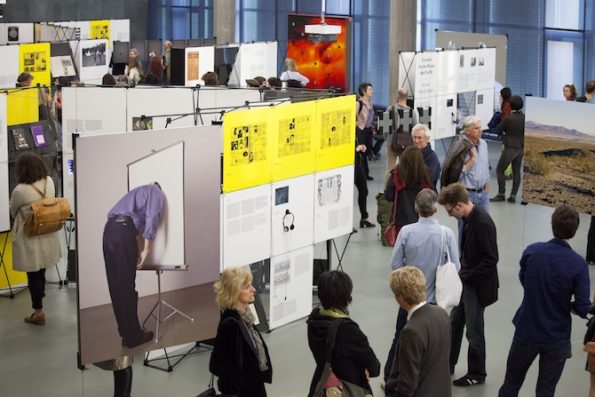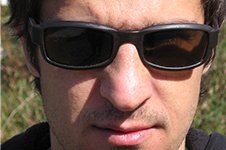Search
To search for an exact match, type the word or phrase you want in quotation marks.
A*DESK has been offering since 2002 contents about criticism and contemporary art. A*DESK has become consolidated thanks to all those who have believed in the project, all those who have followed us, debating, participating and collaborating. Many people have collaborated with A*DESK, and continue to do so. Their efforts, knowledge and belief in the project are what make it grow internationally. At A*DESK we have also generated work for over one hundred professionals in culture, from small collaborations with reviews and classes, to more prolonged and intense collaborations.
At A*DESK we believe in the need for free and universal access to culture and knowledge. We want to carry on being independent, remaining open to more ideas and opinions. If you believe in A*DESK, we need your backing to be able to continue. You can now participate in the project by supporting it. You can choose how much you want to contribute to the project.
You can decide how much you want to bring to the project.

The recently ended exhibition “The Whole Earth” at the Haus der Kulturen der Welt in Berlín is chalked up to be one of the most memorable of the season. Curated by Diedrich Diederichsen and Anselm Franke, the exhibition stems from the image of our Blue Planet in the first representation distributed by NASA in 1967 (an image captured by a satellite). A year later, on Christmas Eve in 1968, an astronaut from the Apollo 8 expedition captured an even more disturbing image, that of planet Earth seen with a bit of the moon in the foreground. Earth seen from another celestial body. These iconic photographs completely transformed the world’s imagination. The investigation of “The Whole Earth” –literally a textual and visual essay transported to an exhibition space–, focuses on the effects that these representations had on public consciousness at the time; from the birth of environmental movements to the hippy counter culture, passing through the new collective imagination of the Cold War.
Here it is stressed that this terrestrial image ended up supplanting the other specular representation that had been dominant since the end of the World War II; the large mushroom cloud of the nuclear explosion. The discovery of the Blue Planet served as a symbolic gauge for practically all systems of representation, from hegemonic power determined by the control of space to a new global awareness–the anteroom to the current globalization – founded on a notion of organic totality where all systems appear interconnected. The subtitle of the exhibitions in this sense is enlightening: “California and the Disappearance of The Outside”. In this sense what it is exhibited focuses on the consequences of this new imagery on representation and consciousness in art, music, film, as well as counter cultural movements, with California as the epicentre.
The activist Stewart Brand flies high above it all. It was he who in 1966 threw a decisive question at NASA, “Why haven’t we seen a photograph of the whole Earth yet?”. Brand is a pivotal figure here, as in 1968 he illustrated the first edition of his magazine, Whole Earth Catalog with the same photograph distributed the year before by NASA. The successive editions of this magazine served as a manual for communal ways of living that were so much in vogue in the United States (it’s calculated that at the end of the sixties and the beginning of the seventies around 10 million Americans were living in communes or with alternative lifestyles). The Whole Earth Catalog helped to break the opposition between culture, technology and nature, promoting a new conception of the cybernetic as a nascent territory. It’s not in vain that California is where the development of computing and personal computers would take place in the following decades (read Silicon Valley and Apple).
The next project of Brand, already in the eighties, the virtual community The WELL (acronym of Whole Earth ‘Lectronic Link), makes it clear that the natural evolution of the communal zeitgeist is the virtual world, and obviously, the Internet. From the Whole Earth Review to Wired.
The disappearance of the outside to which the subtitle refers must therefore be framed within the loss of hegemony of everything related to the interior space, in a new configuration of the frontiers in a return to the earth as a totality or interconnected system. The holistic visions of the whole therefore began to augur a new cosmic harmony. The curators develop this idea of the totality, of the whole, according to different scientific, ecological and counter-cultural theories. These systemic notions are very rich and open up a whole series of questions. Nevertheless, the curators don’t introduce the category of totality in the same way that the concept has been considered profusely within Western Marxism (from Lukács to Jameson passing through Adorno). Albeit, that this totality was suggested by Franke himself, in the conference that invoked the notion of Capital.
This is an exhibition that talks about the mysteries of existence without being existentialist. This is a historicist exhibition that doesn’t simply stick to archiving. This is a very contemporary exhibition and debate. When it is no longer possible to colonize exterior space, one moves to colonize the soul, said Diederichsen at one time. This is what neoliberalism is about, the cybernetizing of the soul and subjectivity. The exhibition therefore traces a pathway from the influence of the oriental philosophies and the new spiritualism in the seventies, to the self-help manuals and Zen equilibrium of any marketing director today. Following on from all this very impressive narrative, the conference took place on the 21 and 22 June in the presence of multitudes. In just one day it passed from eco-psychedelia to the neo-liberalism of Internet, from Marcuse in California, to complex readings (many German) of the “contra” and negativity (by means of Hegel). A book published by Sternberg Press will compile all of this and more together. A real must.

Peio Aguirre writes about art, film, music, theory, architecture and politics, amongst other subjects. The genres he works in are the essay and meta-commentary, a hybrid space that fuses disciplines on a higher level of interpretation. He also (occasionally) curates and performs other tasks. He writes on the blog “Crítica y metacomentario” (Criticism and metacommentary).
"A desk is a dangerous place from which to watch the world" (John Le Carré)